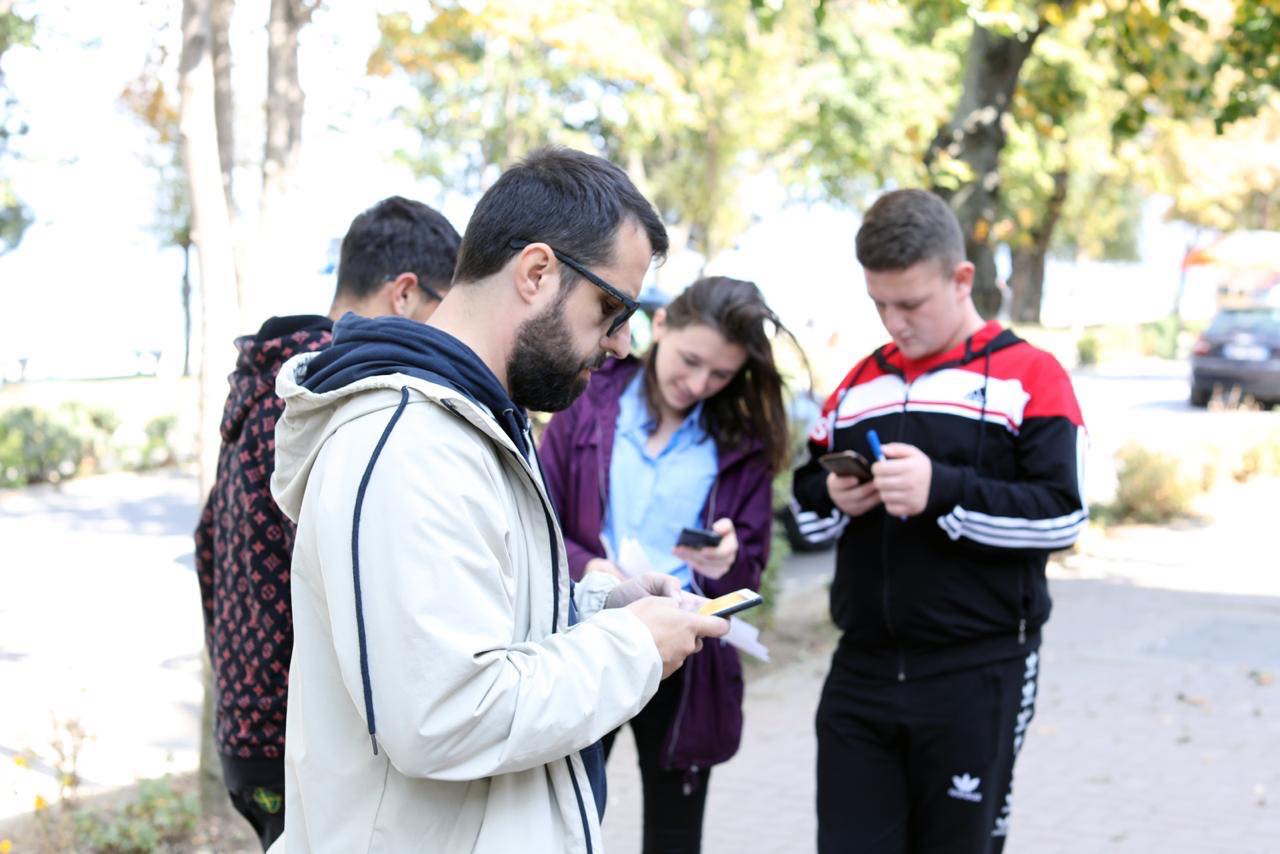By Nora Kushti, UNDP Communication Specialist
Young people from Pogradec mapping data on wheelchair accessibility.
If you want to understand how a person with disabilities feels, ask Artan. He is 25 years old, from Pogradec. He is in a wheelchair. He is jobless. All his life he has faced difficulties in accessing education, employment opportunities, healthcare and social services. It was nearly impossible for him to vote in the last election because the polling station was not accessible for people like him. He lives on the margins of survival with the social assistance he gets from the government. Artan is one of many left behind in Albania. And the number seems to be on the rise...
Agenda 2030 has a moral principle: Leave no one behind. UNDP and other UN Agencies in Albania are helping the Government push the agenda forward.
The question is how can policy makers develop the right policies for those left behind? How can they make informed decisions based on evidence? To work to leave no one behind requires accurate knowledge/evidence of the situation.
At UNDP Albania we took advantage of the theme of this year’s Social Good Summit: Leaving no one behind in the digital age.
Pogradec is one of the areas of our “Leave no one behind” project funded by the Government of Switzerland. The project works to empower vulnerable persons to have equal access to public services and opportunities, to have a voice in public decision-making affecting their lives and hold those in positions of responsibility to account.
So, we took off for Pogradec. Here is what we did and why.
In Pogradec and other parts of Albania, poorly built public dwellings including public offices have left hundreds of people with disabilities in an increased position of vulnerability. They are faced with a widespread lack of accessibility in built environments, from roads and housing to public buildings and spaces.
People like Artan have nowhere to turn to for help.
Data on wheelchair accessible buildings are completely missing in Pogradec and other parts of the country. Pogradec is a very important and dynamic tourist destination in Albania.
In partnership with “Innovation Labs Albania”, we decided to improve the indications of wheelchair accessibility on OpenStreetMap, the open source/ open data platform that anyone can access using Wheelmap, the free application that helps people better understand the accessibility levels of their city. Public buildings came first.
How did we do it?
We teamed up with a group of young people from Pogradec to improve information on wheelchair accessibility data. Initially they were briefed on the concept of OpenStreetMap, the importance of open data and the usage of the OSM based Wheelmap app.
Small teams were created, “armed” with their smart phones and paper maps. Making use of the WheelchairMap.org, the group of young people gathered and mapped the data on wheelchair accessibility for more than 85 public and other buildings in the city.
We had a full house for the presentation of the data. Local government authorities, people with disabilities, and civil society organizations showed up to learn about the findings.
Unsurprisingly the data was shocking. Out of 85+ buildings mapped, 18 were fully accessible, 13 partially accessible and 64 not accessible at all.
Artan, who participated in the meeting said:
“Often, when I have had to attend to issues in several state and non-state institutions, I cannot even access the buildings. People like me spend a lot of time on the internet. So, the mapping is very important for us because before going to an institution I can see if that building is accessible or not. This is very helpful for me and people like me.”
Findings generated discussions among participants on actions that needed to be taken by the local authorities and development partners to address those basic needs of people with disabilities.
My take away:
- I found this extremely useful. I talked to people with disabilities who said that this is crucial for them. They spend quite some time on their phones or on the internet.
- Awareness can result in societal changes. Everyone can contribute so it is important to raise awareness about the issue first and strongly advocate for wheelchair-friendly buildings and not only that. One should look at the entirety of accessibility-related issues for people with disabilities.
- Young people living in this digital age can do something useful for society. This is a case in point: to contribute to creating tangible solutions for people most in need in Albania and help remove the environmental and infrastructural barriers.
What comes next?
The Municipality pledged to take care of some buildings. For our part, we are working to generate interest among businesses, first to design all new buildings in such a way that they are disability- friendly, and secondly to make some of the existing buildings accessible for people like Artan.
I hope this will make life a little easier for the community of persons with disabilities by providing better information.
This is a small contribution but if the whole society contributes, change is inevitable.

 Locations
Locations




